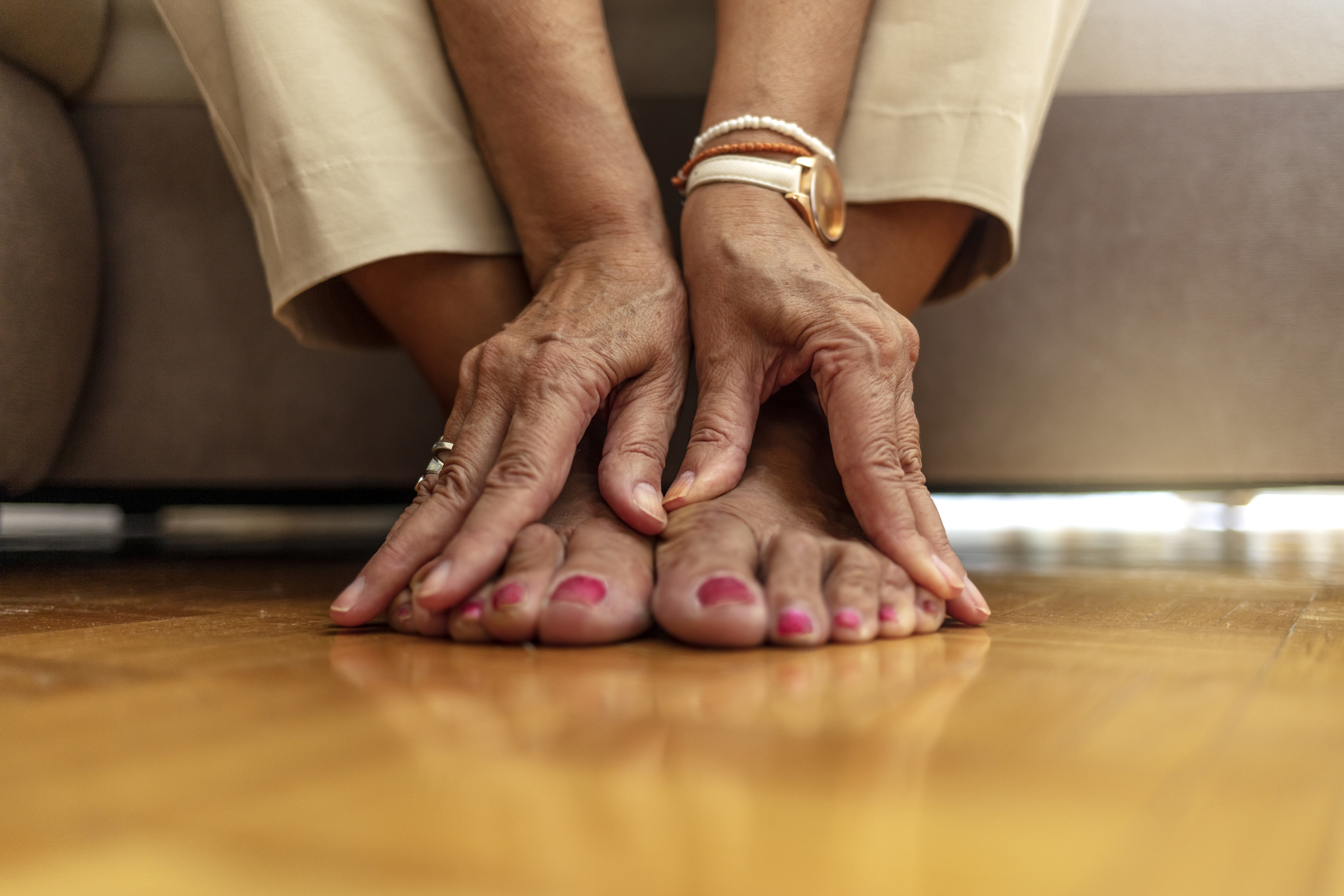
Our care team experts share important tips to keep senior feet happy and healthy.
It is difficult to put your best foot forward when pain wracks each step. Foot issues are common when we get older, which is understandable; there are so many delicate parts that hold the weight of our bodies. Furthermore, because they’re far away from the heart, our feet may not be receiving as much oxygen-rich blood as needed to remain healthy – especially if a medical condition like diabetes restricts blood circulation to the feet.
Yet many seniors choose to simply just grin (or grit their teeth) and bear it, as opposed to pursuing relief for painful feet. This may lead to not only growing discomfort, but compromised mobility and balance issues. Difficulties with senior feet can also be a warning sign for other health conditions that need diagnosis and treatment.
Watch for These Everyday Senior Foot Issues
Foot pain might result from:
- Dried-out skin. During the cold winter season, dry skin is normal. On the feet, it can cause cracks which are not just painful, but set the stage for infection.
- Corns and calluses. These thick spots of dry skin on the feet frequently arise from the friction from shoes that are too tight.
- Bunions. Unlike calluses and corns, bunions are the result of changes to bone structure. They may be extremely painful, usually developing on the outer part of the big toe joint.
- Hammertoes. Rather than all the toes lying flat, hammertoes are misshapen and point upward. You may see a corn along with the deformed toe.
- Arthritis. Arthritis can strike any of our joints, including the feet, generating both mobility issues and pain.
- Plantar fasciitis. Plantar fasciitis is a result of bony growths formed when a ligament on the heel becomes irritated. Walking and standing can be very painful with this particular issue.
- Ingrown toenails. Toenails that grow at a different angle than normal can become ingrown in the flesh of the toe, often requiring a surgical procedure to remove.
- Fungal infections. Wet feet make a good breeding ground for fungus, which could occur between the toes.
Dr. Said Atway, clinical professor of podiatry at The Ohio State University Wexner Medical Center, sees seniors experiencing these kinds of issues on both ends of the spectrum: either highly active and developing damage from excessive use, or individuals with a less active lifestyle dealing with limited circulation to the feet and poor general health. He highlights the significance of proper shoes for older adults, who should try to avoid going barefoot or wearing shoes with too little support, such as flip flops.
To find the most comfortable, best-fitting shoes, he recommends:
- Shoe shopping later in the day, as gravity causes the feet to swell a little during the day
- Trying out shoes by walking in them for at least 20 minutes; giving them a test run on a carpeted area at home should prevent any wear on the soles of the shoes, so they can be exchanged if uncomfortable
- Seeking the recommendation of a podiatrist regarding the best style of shoe for a senior’s particular concerns
Healthy senior feet can play a big role in overall health and wellness. Keeping the feet clean, moisturized, and dry, and performing daily inspections to check for problems, is advised for all older adults. A yearly visit with the podiatrist can also help prevent problems.
Home With You Senior Care, a provider of live in care in Hampstead. MD and nearby areas, is here to help older people kick up their heels in many ways: ensuring good foot hygiene, providing transportation to look for shoes or to the podiatrist, taking walks together to improve blood circulation, and more! Reach out to us at 410-756-0959 for a cost-free in-home consultation today.
